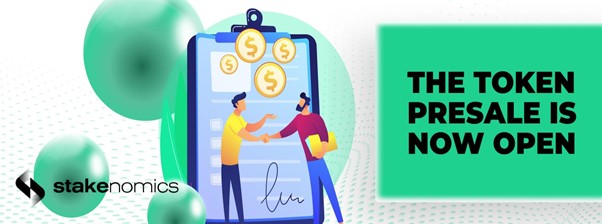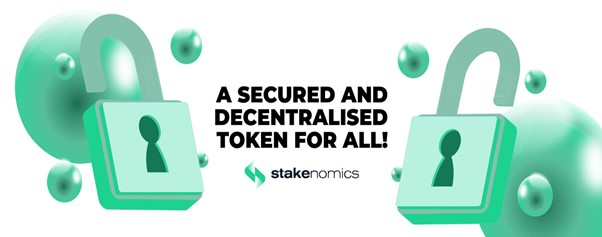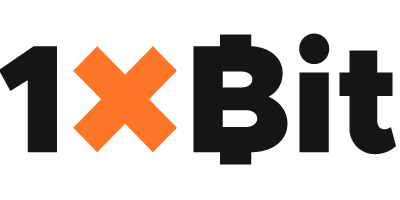Reason to trust

How Our News is Made
Strict editorial policy that focuses on accuracy, relevance, and impartiality
Ad discliamer
Morbi pretium leo et nisl aliquam mollis. Quisque arcu lorem, ultricies quis pellentesque nec, ullamcorper eu odio.
Blockchain technology is no longer a new concept to the world, especially to those interested in the financial market. Blockchain technology provides numerous benefits. One of them is that these cryptocurrency projects can develop their platforms to meet the demands of industries and individuals around the world. Individuals have access to money-making opportunities.
With the current development of Proof-of-Stake (PoS) platforms, earning passive income is possible from the comfort of their homes. Stakenomics (STAK), Solana (SOL), and Aave (AAVE) are three cryptocurrencies utilizing the Proof-of-stake consensus mechanism to ensure that users get value for their time and resources.
Stakenomics (STAK)
Decentralized Finance (DeFi) is a constantly evolving part of the Blockchain sector. One major change was in the security of the network through consensus mechanisms. Cryptocurrency projects and users saw the evolution from a Proof-of-Work algorithm to a Proof-of-Stake mechanism.
Proof-of-Work is a concept that was first explained in 1993. There are two steps involved in the algorithm: the first step is finding solutions to complex tasks and then checking the results. Though the tasks are solvable, they require a large amount of power to process. On the other hand, in a Proof-of-stake system, some validators are chosen according to their holdings. Their holdings represent or replace the work in Proof-of-Work systems and remove competition among miners.
Stakenomics (STAK) is a decentralized finance (DeFi) platform that will be launched on Binance Smart Chain (BSC) and will run on a Proof-of-stake model. Stakenomics (STAK) hopes to solve the problem of scalability by providing a platform based on true decentralization and global involvement.
One of the major reasons for a Proof-of-stake consensus mechanism is that it doesn’t have the same effect on climate change as PoW. As regards its efforts toward a carbon-emission-free planet, Stakenomics (STAK) will reduce the carbon footprint by doing away with sophisticated mining equipment and also electronic waste. Mining equipment also costs a lot and if not managed properly, its lifespan can be reduced.
What Problems Does Stakenomics (STAK) Solve?
- Security: As much as a Blockchain guarantees security by providing a decentralized ledger, networks are still subjected to external attacks and breaches. Stakenomics (STAK) prevents this by developing itself on the Binance Smart Chain which is considered one of the most secure chains in the world.
- Censorship: Many Blockchain networks have been affected by governments who prohibit cryptocurrencies or even track down miners to persecute them altogether. With Stakenomics (STAK)’ PoS system, transactions can continue without any interference from third parties, making the platform free from censorship.
- Scalability: Stakenomics (STAK) will utilize scaling tools to ensure that transactions are made effortlessly. One way to do this is to make use of the Lightning Network. This allows transactions to be completed by postponing frequent transactions. This is ideal for transactions that occur frequently among a set of users.
Stakenomics (STAK) Tokenomics and Governance
The platform’s token, STAK, will serve as the governance token. It will be governed by the platform’s community of users. All decisions will be placed in the hands of the community. Votes will be taken by token holders.
Also, since the ecosystem runs on a Proof-of-stake mechanism, every token holder can earn passive income from the comfort of their homes with just their personal computers (PCs).
There will be staking rewards given to participants for validation of transactions.
Burning also occurs on the platform. This involves taking away tokens from circulation. This means that tokens are no longer connected to the network and are available. This reduces the supply which in turn increases the value of the cryptocurrency token.
Solana (SOL)
Solana (SOL)is an open-source Blockchain network that provides security, high transaction speed, and low congestion to its users. The use of a Proof-of-work consensus mechanism by major Blockchain networks like Bitcoin (BTC) and Ethereum (ETH) has led to network congestion. The increase in congestion also increased transaction fees because the system was designed that way.
Solana (SOL) is considered by many to be a better Blockchain for the development of Decentralized applications (dApps) and Decentralized Exchanges (DEXs).
What Makes Solana (SOL) Work?
On the Solana (SOL) network, the recorded number of transactions per second is 50,000. This is an amazing record and we have to ask why it is so. This is because the developers created proprietary systems that function as a single entity to make the network reliable for its users. Here are some of the tools and systems employed by Solana.
- Delegated Proof-of-stake (dPoS): Users may be familiar with the popular consensus mechanism known as Proof-of-stake (PoS). Delegated Proof-of-stake (DPoS) is slightly different from PoS. Although both mechanisms make use of validators to process transactions, DPoS gives more chances to users who hold a higher amount of the platform’s token, SOL. This way, validators are simply those heavily invested in the network. This mechanism also allows non-validators to earn money as they can delegate their tokens to trusted validators. This way, every user participates in the network and keeps it safe.
- Proof of History (POH): This is a cryptographic tool that plays an important role in the platform. The efficiency of the network is increased as this protocol integrates a timestamp in every approved transaction.
- Gulf Stream: Transactions are selected by validators in a waiting area known as a mempool. It is a concept used by some blockchain networks to ensure that high-paying transactions are processed first. This causes congestion as low-paying transactions will be ignored by miners and unattended. This also leads to network congestion. Gulf Stream is a tool that ensures transactions are forwarded to validators before there is a build-up.
- Sealevel: This is another tool that gives Solana (SOL)an edge over popular Blockchain networks. Thus the system allows smart contracts to run parallel to each other. What does this mean? Unlike most Blockchain Virtual machines that only allow one smart contract to run at a particular time, multiple smart contracts can run on the Solana (SOL)network at the same time. Amazingly, this does not reduce the network’s overall performance.
- Cloudbreak: This serves as the database for all of the accounts on the network.
The other features not mentioned here are Archivers, Turbines, Pipelining, and Tower BFT. These features all work together to keep the network up and running and secure.
SOL Token
As it is with most networks, Solana (SOL) functions effectively with its native token, SOL. Users earn rewards in SOL through staking available on the platform.

Aave (AAVE)
Aave (AAVE) is a next-generation lending Blockchain protocol that’s completely decentralized. It is an open-access platform that allows users to lend, borrow and even earn interests on digital assets. The network solves most issues faced by centralized lending services and users. When lending from banks, users never get access to profitable interests. Instead, they only get a small profit on their huge deposits. With Aave, users do not need a middleman or third-party entity. The platform runs by itself through smart contracts. Also, interests are paid directly into users’ wallets.
Benefits of Aave (AAVE)
- Open-Source: Aave (AAVE) keeps in line with the openness of Decentralized Finance (DeFi) by making its network open-source. This is helpful because there are no hidden risks or fees as the programming is scrutinized by the community and is subjected to constant upgrades, which makes it more secure.
- Interest Rate Options: There are stable and variable interest rates available to users. It is also possible to switch between both whenever a user wants to. This way, users can meet their investment goals.
- Privacy: Since there is no middleman involved in transactions, there is no need to provide personal information or sign documents to prove identity. Privacy-minded users can rest assured that their data and transactions are kept secure and private on the Aave (AAVE) network.
- Asset Selection: Users have access to a wide range of assets and lending pools. There are currently over 10 cryptocurrencies available on the Aave (AAVE) network.
How Aave (AAVE) Works
Aave (AAVE) is launched on the Ethereum Blockchain and is a peer-to-peer lending system. Aave (AAVE) provides a seamless financial experience to users by utilizing collateralized loans and lending pools.
On the Aave (AAVE) platform, there are lenders and borrowers. Lenders deposit funds into liquidity pools for borrowers to access any time they want.
Users who wish to borrow must have locked an amount of collateral equivalent to that being withdrawn.
Aave (AAVE) also makes use of blockchain tools and systems such as reserves, oracles, flash loans, and interest rate switching to provide users with better trading and money-making opportunities.
The Aave (AAVE) Token and aTokens
The platform’s utility token is AAVE. It is a deflationary token launched on the Ethereum blockchain as an ERC-20 token.
aTokens, on the other hand, are interest-bearing tokens that can be stored and traded freely on the platform.
In terms of transaction speed, interoperability, and functionality, these cryptocurrency projects could outshine the payment systems of today and prove themselves as platforms for sources of passive income.
Stakenomics (STAK);
Presale: https://register.stakenomics.io
Website: http://stakenomics.io/
Telegram: https://t.me/StakenomicsOfficial
Disclaimer: This is a paid release. The statements, views and opinions expressed in this column are solely those of the content provider and do not necessarily represent those of NewsBTC. NewsBTC does not guarantee the accuracy or timeliness of information available in such content. Do your research and invest at your own risk.


























